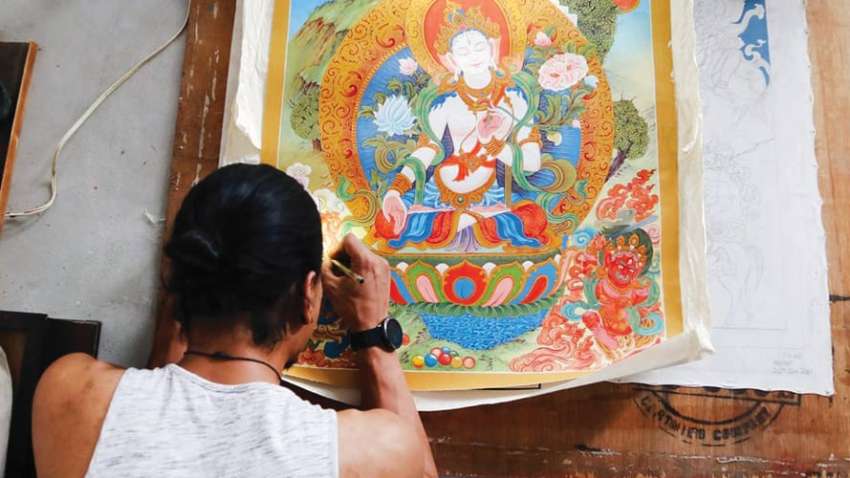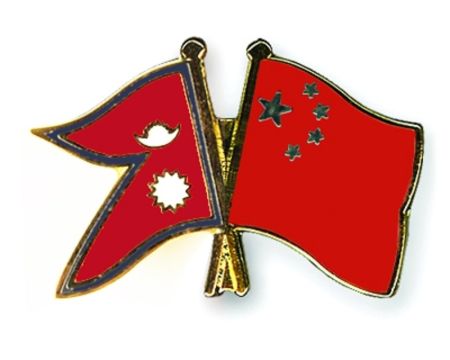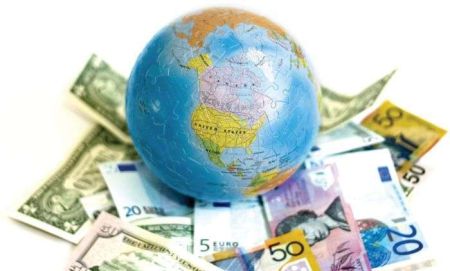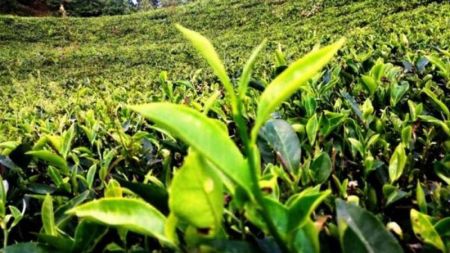BY Rajendra Prasad Koirala
Economic mobility, which refers to the ability of individuals or households to improve their financial conditions, is a crucial tool to measure societal well-being. Indigenous products, created and traded by local communities using their traditional expertise and available resources, play a vital role in promoting economic mobility on a global scale.
Case Study: The Maasai Tribe in Kenya
The Maasai tribe, an ethnic group inhabiting Kenya and Tanzania, represents a rich cultural heritage and a unique way of life. While cattle herding remains a central aspect of Maasai culture, recent years have witnessed a shift towards utilising traditional knowledge to produce and market indigenous products.
One outstanding example is Maasai beadwork which is known for its vibrant colours and intricate designs, and has gained recognition worldwide. Through targeted marketing efforts aimed at tourists and online platforms, the Maasai people have strengthened their economic mobility. This additional income has enabled Maasai families to invest in essential services such as healthcare and education, propelling them towards prosperity.
Furthermore, the involvement of Maasai women in the production and sale of indigenous products has led to greater financial independence and decision-making power within households, promoting a more equitable distribution of resources. In addition to beadwork, the Maasai people produce a diverse range of handicraft products, traditional attire, accessories, and other indigenous products. This is contributing to their economic advancement while also preserving their cultural heritage and gaining global recognition.
The Maasai case study highlights the significant impact that indigenous products can have on community economic mobility. By harnessing traditional knowledge and resources, indigenous peoples can establish sustainable livelihoods for themselves and future generations. The governments and policymakers, therefore, should acknowledge the value of indigenous productions and provide necessary support to them. This can ensure economic prosperity while also preserving cultural identities.
There are several examples in our neighbouring country, India, where the production and marketing of indigenous products have brought remarkable changes to people's lives. Communities across India are utilising their indigenous knowledge and resources to empower themselves, preserve their cultural heritage, and enhance their economic mobility. Any support to production and distribution of indigenous products can foster inclusive growth and development. Some notable success stories from India include:
Diverse Cultural Heritage:
● Pashmina Shawls: Handcrafted in Kashmir using wool from Himalayan goats, Pashmina shawls represent fine craftsmanship and support local artisans with ancient weaving techniques.
● Madhubani Paintings: Originating from Bihar's Mithila region, Madhubani paintings feature attractive designs and vibrant colours. Promotion of these paintings is preserving this cultural heritage and providing livelihoods for predominantly female artisans.
Sustainable Agricultural Practices:
● Northeastern Indian Tribes: Indigenous groups like the Khasi and Garo tribes in Meghalaya practise traditional farming methods which ensure food security and biodiversity conservation without relying on chemical inputs.
● Terrace Farming in Uttarakhand: Indigenous communities in Uttarakhand state of India utilise terrace farming techniques to cultivate crops such as rice and pulses. This farming method minimises soil erosion and maximises land utilisation in hilly areas.
Traditional Medicinal:
● Ayurvedic Products: Ayurvedic medications and supplements that are produced by using locally sourced plants and herbs have gained popularity across India and beyond. This is contributing to economic mobility in rural areas that are rich in herbal resources.
● Tribal Medicinal Practices: Indigenous tribes across India have a long-standing tradition of using medicinal plants for healing. Initiatives like the Adivasi Medicinal Plant Network in Odisha are preserving cultural heritage while also providing sustainable livelihoods to the local community.
Handloom and Textile Traditions:
● Kanjeevaram Silk Sarees: Renowned for their quality, Kanjeevaram silk sarees are handwoven in Tamil Nadu. The promotion of this traditional art is sustaining a thriving handloom sector and supporting local weavers.
● Khadi Clothing: Khadi, a hand spun and hand woven fabric, played a significant role in India's independence movement. Supported by organisations like the Khadi and Village Industries Commission (KVIC), Khadi promotes sustainable, eco-friendly fashion while empowering rural artisans.
Similar to India, Nepal has also witnessed success in commercialising indigenous products. By focusing on items such as Lokta paper, Thangka paintings, handwoven textiles, and other handicraft products, Nepal has preserved its cultural legacy while fostering sustainable livelihoods for the local community. Some of these endeavours include:
Handmade Paper (Lokta Paper):
Nepali artisans create journals, greeting cards, and decorative items using Lokta paper which is known for its durability and eco-friendliness. These products not only showcase traditional craftsmanship but also provide a stable income for rural communities.
Thangka Paintings:
Kathmandu and different other regions of Nepal are home to workshops producing exquisite Thangka paintings. These paintings feature intricate religious motifs and natural pigments. The sale of Thangka paintings not only supports local artists but also promotes Nepal's cultural heritage worldwide.
Handwoven Textiles:
Nepali artisans weave Dhaka cloth using traditional looms creating intricate patterns for clothing, accessories and home furnishings. Likewise, Dhaka Topi, the traditional Nepali cap, prepared from Dhaka fabric is not only preserving centuries-old tradition but is also providing livelihoods for local artisans.
Handicraft and Wood Carvings:
Wood-carved Statues and Masks: Nepali artisans use wood to create statues of different deities and colourful ceremonial masks. This traditional craftsmanship is not only promoting Nepal’s cultural diversity and tourism, but also earning livelihood for families depending on this profession.
Metal Crafts: Utensils and religious objects made from brass, copper and other valuable metals not only reflect excellent Nepali craftsmanship but have also become a source of income for traditional artisans. This in turn, is preserving the ancient art forms and also contributing to the local economy.
Recognizing the importance of these traditional products in enhancing economic mobility and keeping the traditional art forms alive, the government should provide needful support and facilitation to the local communities.
The promotion and commercialisation of native products hold promise for driving economic advancement, empowering communities, preserving cultural heritage, and fostering environmental sustainability. By leveraging the economic benefits of its indigenous merchandise, Nepal can lay the groundwork for a more resilient and prosperous economy in the future. This can be achieved through targeted investments, supportive regulations, and collaborative endeavours involving the public, private, and community sectors. Embracing and advocating for indigenous goods can unlock fresh avenues for advancement and inclusive progress in Nepal, ensuring a promising future for its populace while safeguarding its vibrant cultural heritage.
(Koirala is the CEO of Gyanda Academy)






















